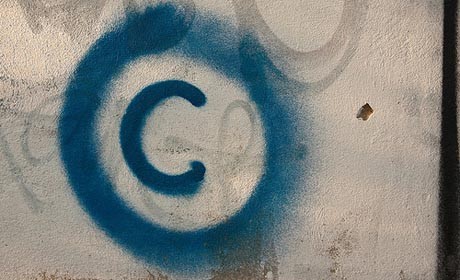
Vice Media's Tim Pool, a specialist in mobile technology who reported from 2013's Istanbul protests using Google Glass, has launched an app for the proper accreditation and verification of digital news footage.
Taggly, available for iOS, automatically stamps the author's name onto an image or video, alongside the date, time and location they were taken and a company logo.
"I needed this," Pool told Journalism.co.uk. "With my photos I'm getting 50 to 100 retweets and there's no way for anyone to know the photo was mine, I'm not getting credit for it and then it's getting picked up and put on news websites and I'm thinking how do I get my website on there."
A photo taken by Pool in Turkey, stamped with the Vice logo and meta data, and shared on TwitterThe TOMA in #istanbul pic.twitter.com/oh1rTEq9HY
— Tim Pool (@Timcast) March 14, 2014
The same was true for news organisations, said Pool, whose reporters or producers "build up tens of thousands of Twitter followers taking photos or videos while they're on the [company] dime".
"So how does a news organisation get value out of the social media content – the media – being produced by their staff on the ground overseas?" he said.
Pool's solution is to give the option to watermark and timestamp every image taken by official accounts that are being shared on social media.
When a user first opens the app they decide what information will be stamped on new photos or videos, he said, by adding their name and choosing whether to include date, location and a company logo.
This information is then automatically added to new footage captured in the app, and users can go back through their camera roll to tag collections of multimedia. Users can then share the multimedia to through the in-built iOS share functions.
"Every time you open that app [the stamping is] done," he said, explaining that the main focus is in making the process as straight-forward as possible. "You go straight to the camera, there's no in-between, there's no extra steps, it's one time and then every photo and every video you shoot has the information you want included."
Another image showcasing the app's capabilities, again taken by Pool in Turkey
The next step for Pool and his partner in creating Taggly, Isaac Phillips, is to release the Android version of the app before working on a synchronisation function for teams and other features in a paid version, planned to be available for $2.
"We need the users to tell us where to take it," he said. "I have a lot of ideas but at the end of the day you can have the best technology in the world but if people don't use it that doesn't matter."
The app is the first experiment from Pool and Phillips in what they hope will develop into a "fully-functioning suite on mobile" for professional and citizen journalists that would "decentralise the ability to collect and share information", a capability he believes all journalists should have.
His software could eventually include other options to "make people better producers, to make the citizen journalist better at what they do", and by expanding the facilities of software in successive iterations, Pool hopes it will be easier for reporters or citizen journalists who have little experience in mobile journalism to use.
"If every time we put out a new release we add one small feature then the user grows and learns naturally with the tool we're building," he said. "So the bar of entry will be extremely low. It's much easier to hop over a one-foot bar than to give someone the six-foot and say 'figure it out'."
The ultimate aim, he said, would be for journalists to be able to produce their own reports and features from one app with a low barrier for entry to enable citizen journalists to make the most of the tool as well.
"With citizen journalism, the average person is going to be the most important journalist in the world at their given moment," he said. "We need to make sure we have the best tools possible to document and tell the stories and we can't expect everyone in the world to go to J-school and learn how to use a production studio."
The unfettered use of user-generated content (UGC) by news organisations, often gathered from social media, has come under close scrutiny this week as the Tow Center for Digital Journalism published the first part of a study into the use of amateur footage.
Eight 24-hour news broadcasters were monitored over three weeks, with the results – as outlined in this accompanying BBC College of Journalism article by Tow Center Research Fellow Claire Wardle – putting a spotlight on the issue of labelling and crediting of such content, particularly on television.
As such, Pool wants to put crediting control into the content creators' hands.
"Social media is a content space and I come from journalism and media, on the ground doing news," he said. "But the truth is you could be an artist or a musician and need something like this.
"[Content creators] want this on their content like we have had on TV for the past 50 years."
Free daily newsletter
If you like our news and feature articles, you can sign up to receive our free daily (Mon-Fri) email newsletter (mobile friendly).
Related articles
- How AI can help journalists track MPs financial interests
- Tools for journalists: Missing Perspectives Directory, for connecting newsrooms with women
- The FT launches Digital Edition App, a print newspaper replica
- Seven sources of free images for journalists
- Futureproofing your newsroom: understand your USP in a crowded space









